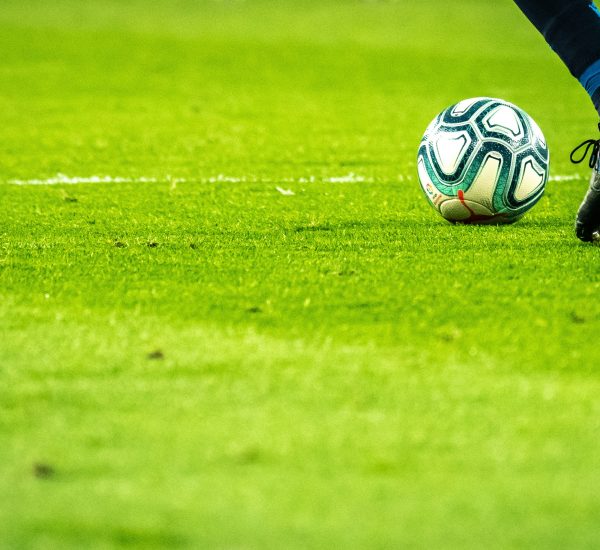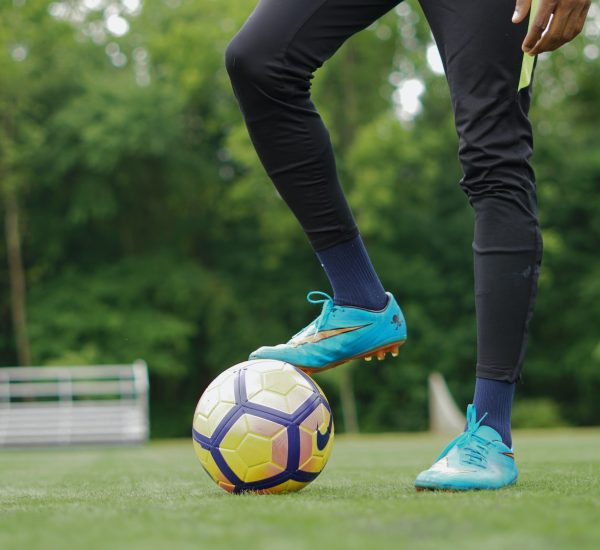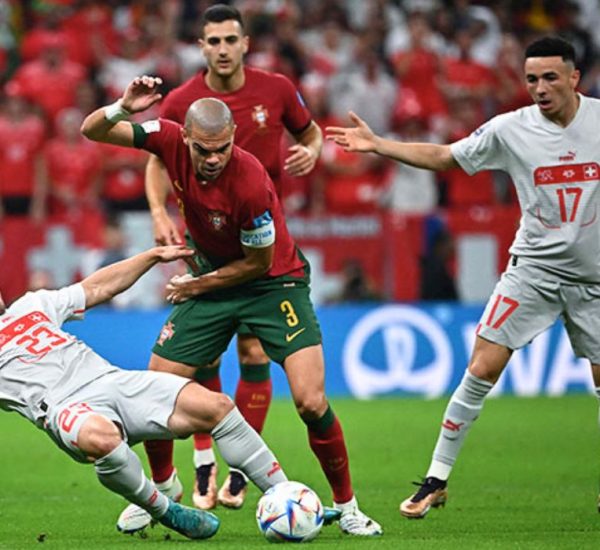One of the most important factors in learning how to kick a soccer ball is power. This is because a successful kick must be powerful and accurate. Therefore, it’s important to break down moves into smaller steps and gradually increase the speed. This way, you can practice your kick at a normal pace and improve your accuracy.
Keeping your eyes on the ball
Keeping your eyes on the ball while kicking a soccer ball is crucial for accuracy and power. It is also important to look at the middle of the ball, not at the opposite end. A lot of players make the mistake of looking in the wrong direction when kicking a ball, which will decrease the power and accuracy of the kick. Developing this habit will help you kick more goals.
When kicking a soccer ball, it is crucial to keep your eye on the ball, so that you can read the flight of the ball and determine how to control it. You should also get your body in line with the direction of the ball, as well as position it for the next action.
Proper eye tracking is an important soccer skill. It allows you to follow the path of the ball and identify teammates and opponents. It also helps you to maintain balance, as the ball moves through different distances.
Leaning forward or back
Proper kicking technique includes not leaning forward or back during the kick. You should maintain an upright position during the kick and the opposite arm should be extended away from your body. The shooting leg should also be bent at the knees. A narrow “V” shape will improve the power and momentum of the kick. Daily stretches and exercises are beneficial in achieving a high-quality kick.
In soccer, the angle of the body during kicks can make or break a kick. A forward-leaning position will help channel power into the shot, but a backward-leaning position will lead to a high-end shot. If you lean back, the ball will veer away from your body, which is counterproductive.
When kicking a soccer ball, it is important to make contact with the ball using the inside of your foot. It is also important to plant your other foot. When kicking a ball, make sure to aim it approximately halfway up. By doing this, you will increase the height of the ball.
Creating a V shape
When kicking a soccer ball, create a V shape with your lower leg. This will increase the ball’s speed and efficiency. You can do this by kicking with your big toe knuckle instead of your heel. This will also create a longer kick.
The angle of your body will determine the accuracy of your kick. If you have a forward body angle, you’ll end up kicking the ball away from you. The best way to correct this is to practice kicking with different angles. Depending on the type of kick you’re trying to make, you want to make contact with the ball with one or both feet.
When you’re kicking a soccer ball, creating a V shape with your foot is a good way to avoid a backward-pointing kick. This is a common soccer kicking technique that’s incredibly effective. Many soccer players use this technique to score goals in games.
Using a low back swing
Using a low back swing to kick the soccer ball will increase the power of your kick. It is vital to have a strong lower back and a powerful upper body, since both of these muscles are involved in the kicking motion. You can increase the strength of these muscles by doing some core training exercises. A strong core will allow you to control the twisting of your body during the kicking motion, which will increase your power and accuracy.
You can also try kicking the ball with your non-dominant foot. A good practice for this is to stand behind the ball and make sure that the inside of your foot is in line with the ball. Then, you can try kicking the ball up a few feet, but avoid spinning it.
Another good way to improve your kick is to use the outside of your foot. This kick technique can help you improve your first touch. You can also try it when your weight is balanced on your left foot and you need to spin the ball around an obstacle.
Striking the ball with power
Striking the soccer ball with power is an important skill for players to learn. The best way to hit the soccer ball with power is to strike it with the instep part of the foot. This area of the foot is the densest and provides the greatest amount of power when striking the ball. Make sure you strike the ball with the instep with power by keeping your head down, knee over the ball, and hips facing the ball.
When striking the ball with power, your first step should be to follow the ball and jab the ball if it is moving. Your second step should be to plant your foot beside the ball, and your third step should be to lock your ankle. This will lock your ankle so that your strike is solid and accurate.
Another important part of your soccer technique is knowing which muscles to tighten. Make sure to have enough run-up before the ball comes at you. You should also dribble the ball forward to allow yourself enough room before hitting the ball. By using your body correctly, you will have the greatest amount of power and accuracy.
Correctly positioning your plant foot
Correctly positioning your plant foot is crucial for a successful soccer kick. It should be about a foot and a half from the ball. This gives your striking foot room to follow through the ball, which makes it easier to strike it. The plant foot also acts as stability when striking and keeps you balanced.
The proper positioning of the plant foot is critical for both accuracy and power. Ideally, your plant foot should be half a yard away from the soccer ball and point directly at your target. A loose foot will reduce power and accuracy. Also, the toe will impede your shot, so be sure to steer away from it when positioning your plant foot.
The direction of the kick will depend on where you are kicking from. To do this correctly, point your plant foot to the direction you want the ball to go. Aiming the ball with your plant foot is an easy way to create power. In addition to a level foot, remember to lock your ankle for added power and accuracy.
Using a jab or swing
One of the most crucial factors when kicking a soccer ball is to have the correct body angle. A poorly angled body will make the ball go directly to the body. Practice changing your body angle to improve your accuracy. Also, remember that the part of the foot making contact with the ball will determine the direction the ball goes.
Using a jab or swing to strike the soccer ball is a good way to improve your accuracy and power. When kicking a soccer ball, you want to have as much power as possible, so make sure that you are following through with your kick. A good way to achieve this is by positioning your plant foot half a yard from the ball. Then, you want to make sure your foot is pointing in the direction of the target. Using your plant foot as a target allows you to maximize accuracy and power when striking the ball.
When kicking a soccer ball, the plant foot should be beside the ball, not behind it. This will force your toe to point down and make the ball go further than it should. Additionally, it is important to make sure that your body is over the ball to avoid toe kicks. Another important tip is to have a short, compact swing, which will allow you to have fewer errors and get your shot off faster. Coach Michler uses this technique to improve his players’ accuracy and power.
Using your arms to kick a soccer ball
When you’re kicking a soccer ball, using your arms is an important part of the play. Your raised arms will attract the attention of teammates and show them that you want the ball. However, make sure not to use your arms as weapons. You’ll be penalized if you use your arms to attack another player.
Using your arms to kick a soccerball is a technique that allows you to produce height and keep the ball flat. This method also allows you to use your body’s momentum to help power your kick. The goal is to produce as much power as possible from your kick.
First, learn how to position yourself before you kick. You should lean slightly to one side or the other. This will help you develop a better balance and increase your power. Make sure you’re leaning to the side you want to shoot. If you’re right-handed, you’ll want to lean to the left as you kick.



